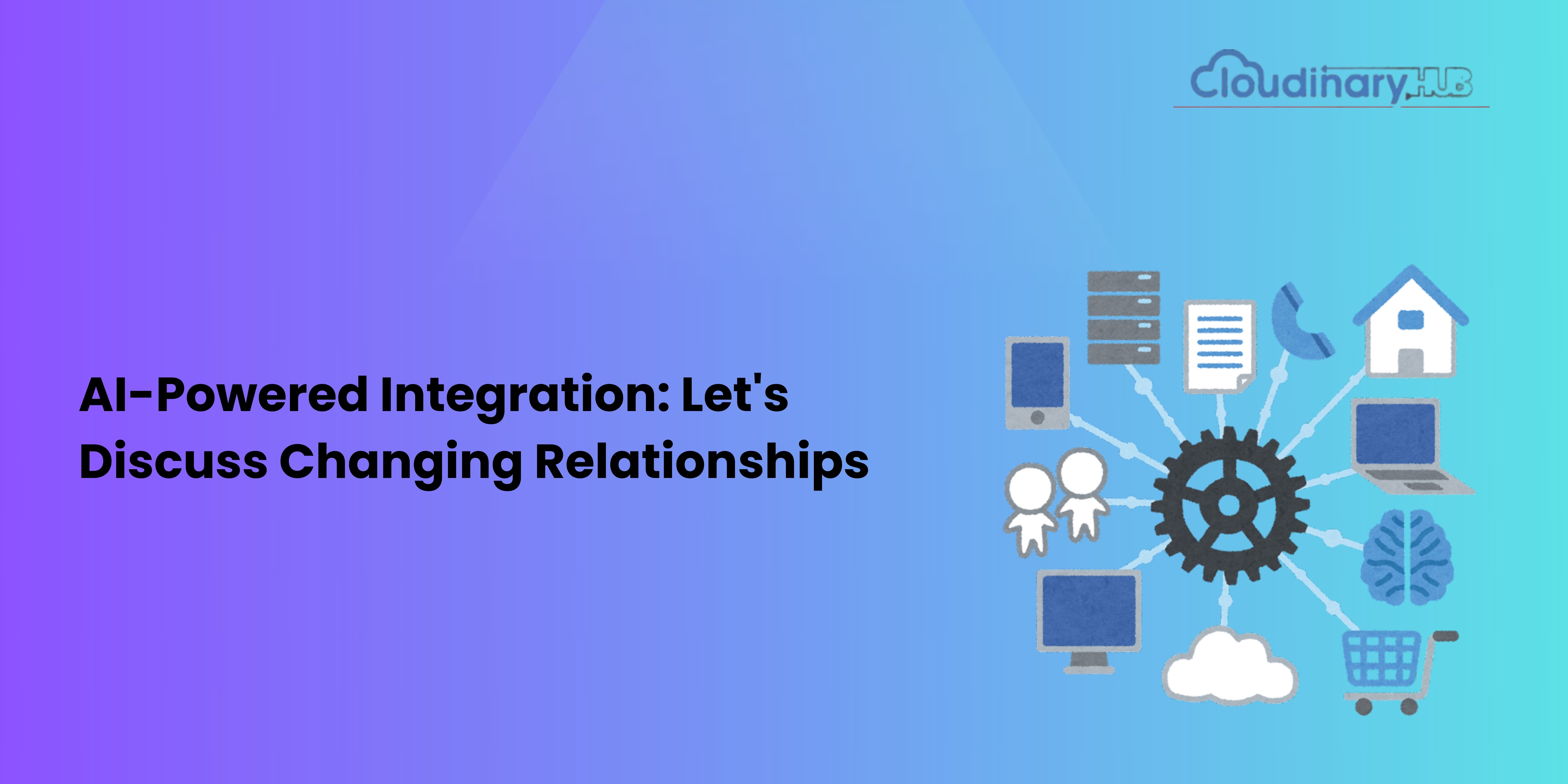Hi there! Let’s explore AI-powered integration, which is not only exciting but also revolutionary. What if all of your preferred programs, resources, and systems could function as a single, well-choreographed dance? That sounds fantastic, doesn’t it? That is the main goal of AI-powered integration. So, take a coffee and let’s discuss how this technology is changing how we link systems, optimize processes, and make more informed choices.
AI-Powered Integration: What Is It?
All right, let’s dissect it. Consider AI-powered integration as an extremely intelligent link between all of your systems and tools. AI handles the heavy labor, in contrast to conventional approaches that need a great deal of manual coding. It is adaptable, learns from data, and makes adjustments to ensure smooth operation
Here is a brief table that highlights the essential components:
| Core Element | What It Does |
| Machine Learning (ML) | Learns from data patterns to optimize processes and predict outcomes. |
| Natural Language Processing (NLP) | Understands human language for more intuitive interactions. |
| Robotic Process Automation (RPA) | Automates repetitive tasks across systems. |
| Intelligent APIs | Connects platforms dynamically for seamless data exchange. |
| Data Orchestration | Synchronizes and manages data to ensure consistency and accuracy. |
That’s cool, isn’t it? Let’s examine why this is so important.
Why Is AI-Powered Integration Important?
Efficiency is something we all adore, don’t we? AI-powered integration fulfills all of those requirements and more, whether the goal is to save time, reduce expenses, or simply make life easier.
Advantages You’ll Love
1. Automation that Saves Time
Imagine being able to move data between systems without having to do it by hand. For example, does your email marketing tool immediately sync with customer data from your CRM? Magic, pure magic. AI handles all of that, freeing you your time to concentrate on the important things.
2. Faster, Smarter Decisions
Gold is data, but only if you can interpret it. Real-time data analysis and insights are provided by systems with AI-powered integration. Do you need to identify patterns or forecast demand? Done and done.
3. Stress-Free Scalability
The complexity of managing systems increases with the size of your firm. No matter how big your business gets, AI will grow with ease and make sure everything runs properly.
Another useful table that breaks it down is this one:
| Benefit | How It Helps |
| Automation | Eliminates manual workflows and repetitive tasks. |
| Real-Time Insights | Offers actionable data analysis instantly. |
| Cost Efficiency | Reduces operational costs by minimizing errors and downtime. |
| Improved CX | Delivers personalized, seamless customer experiences. |
Overcoming Obstacles: Life Is Not Always Sunny
Integration enabled by AI has its limitations, just like any other technology. Don’t worry, though; there are strategies to deal with them.
1. Security of Data
significant responsibility accompanies significant integration. The likelihood of data breaches increases with the number of systems you link. Using secure APIs and encrypting data can help keep everything locked down.
2. Problems with Compatibility
Antiquated systems can be uncooperative. Modernizing or utilizing middleware to fill the gap is frequently necessary for AI-powered integration. It’s similar to updating your outdated systems.
3. Price and Experience
Indeed, there is a one-time cost, and not everyone is an expert in artificial intelligence. However, working with the appropriate professionals may make all the difference, and the return on investment is worthwhile.
| Challenge | Solution |
| Data Security | Use encryption, secure APIs, and compliance standards. |
| Compatibility | Employ middleware to bridge legacy and modern systems. |
| High Initial Costs | Focus on long-term ROI and partner with experienced vendors. |
| Skill Gaps | Invest in training or collaborate with AI specialists. |
What Comes Next? AI-Powered Integration’s Future
We haven’t even touched the surface yet. This is what will happen:
1. Automated processes
Consider automating the entire process from beginning to end. Hyperautomation is what that is, and it will happen soon.
2. Computing at the Edge
Decisions are made more quickly and intelligently when data is processed closer to its source. Ideal for sectors where timing is critical.
3. Platforms Without Code
Don’t know how to code? No issue. With these platforms’ straightforward drag-and-drop features, anyone can easily establish integrations.
4. Uniformity
Connecting systems will be simpler than ever thanks to universal integration standards.
What Comes Next? AI-Powered Integration’s Future
We haven’t even touched the surface yet. This is what will happen:
1. Automated processes
Consider automating the entire process from beginning to end. Hyperautomation is what that is, and it will happen soon.
| Trend | What It Means |
| Hyperautomation | Full automation of end-to-end processes. |
| Edge Computing | Real-time decisions with reduced latency. |
| No-Code Platforms | Empowering non-technical users to build integrations. |
| Standardization | Easier interoperability across industries. |
Let’s Conclude
Like a backstage hero, AI-powered integration silently makes connections, works its magic, and creates the conditions for creativity. Whether you work in manufacturing, healthcare, retail, or finance, new technology is changing how we live and work.
What do you think, then? Are you prepared to welcome the connected future? Let’s get the discussion going and see where integration driven by AI can lead!

